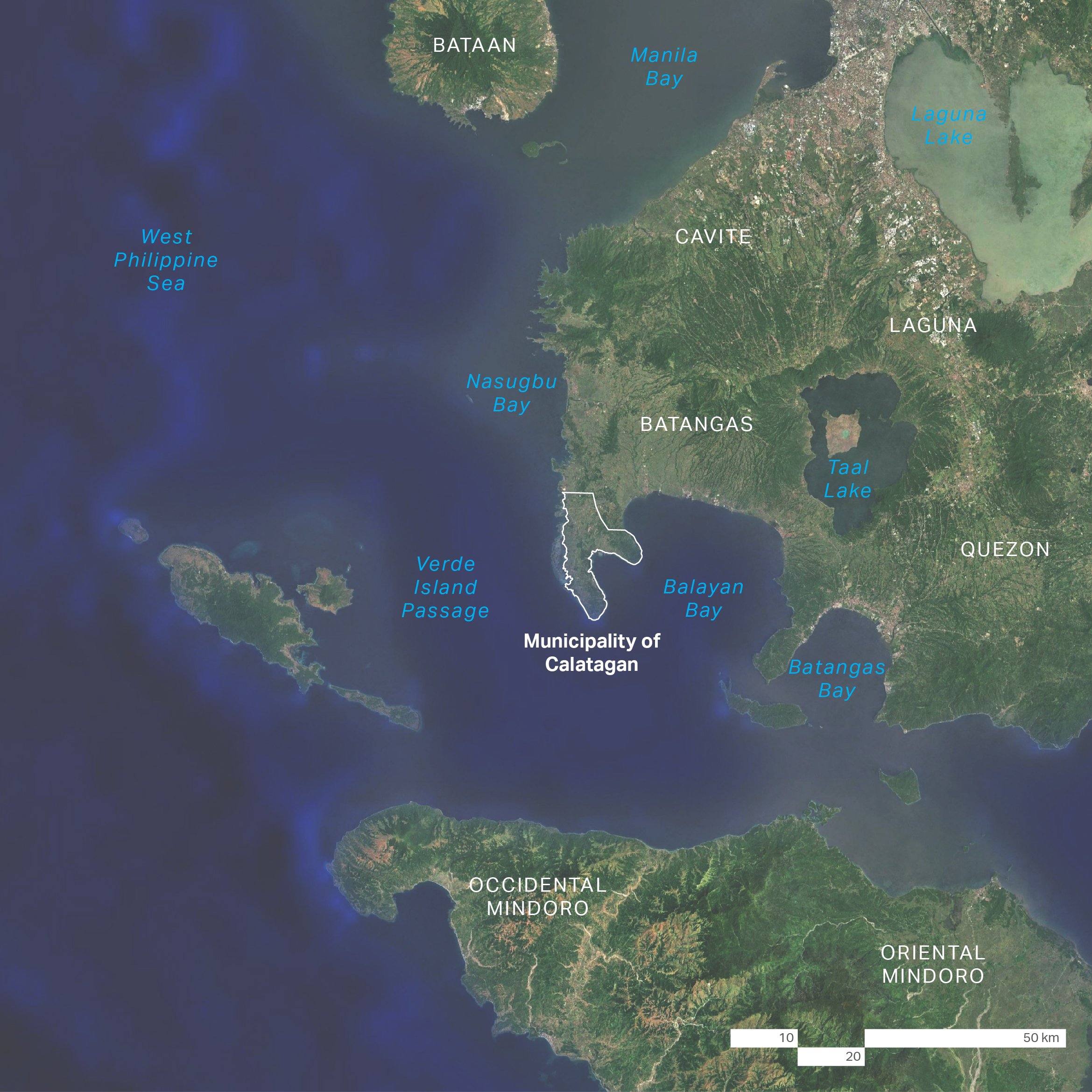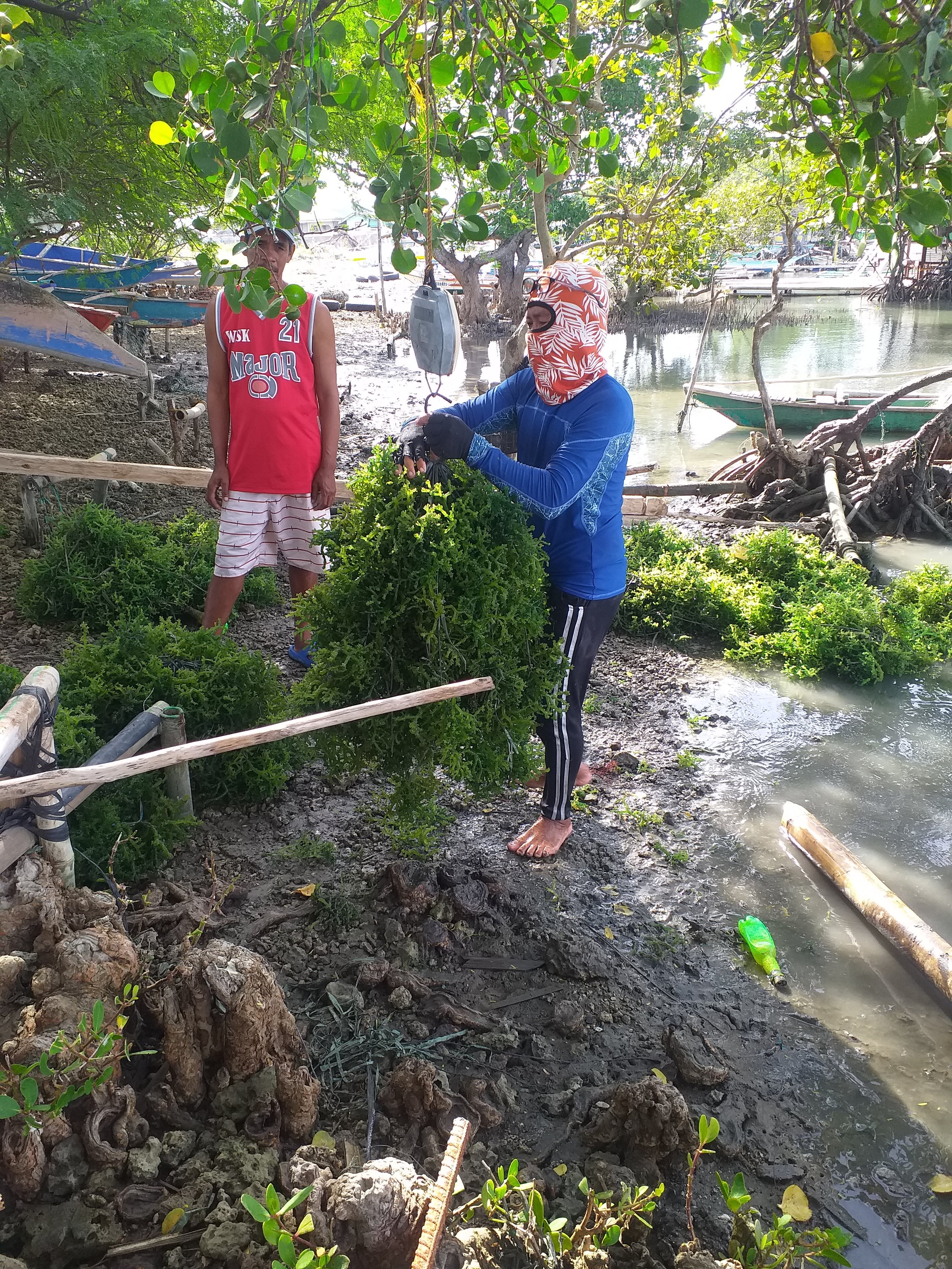
Calatagan
Batangas
More than 800 species of seaweed have been recorded in the Philippines. In Calatagan, which is located along the Verde Island Passage, seaweed is an important component of the marine ecosystem and provides many local fisherfolk with livelihoods. However, the ecosystem and industry are beseeched with existing problems and constraints, particularly pollutants from coastal outflows.
-
Seaweed is major source of livelihood for Calatagan’s fisherfolk communities, such as those in Sitio Carbonan. However, seaweed yields have dropped due to the degradation of water quality.
Coastal population is growing so the local government plans to relocate families out of hazard-prone and environmentally critical areas. Also, outflows from the intensive culture practices in the shrimp ponds are disrupting the natural ecosystem.
-
The proposed green-gray solution is to enhance the existing mangroves in Sitio Carbonan to assist in the treatment of aquaculture wastewater discharge. These treatment wetlands can help mitigate the impacts of shrimp farming on coastal water quality and the seaweed farms.
The pilot site is located within the municipal waters of Calatagan along the west coast. The shrimp farms by the coastline span about 20 hectares. There are two discharge outlets. Meanwhile, the current mangrove area is about 2.7 hectares. Enriching the mangroves by the discharge outlets can create a wetland buffer zone along the shoreline.
This approach leverages Calatagan’s existing natural resources and capacity for mangrove rehabilitation. Calatagan has five official Marine Protected Areas, of which two of the most recent are located on the west coast and focus on mangroves.
-
Improving the coastal water quality in Sitio Carbonan using green-gray infrastructure may unlock multiple benefits including:
• Improve seaweed yield and stabilize the livelihoods of small scale fisherfolk
• Generate supplemental income associated with mangrove rehabilitation
• Improve marine biodiversity
• Reduce the impact of storm surges on the local aquaculture ponds
Ultimately, the pilot can make a case for the municipality wide adoption of nature-based strategies in aquaculture to:
• Promote low carbon and inclusive growth of Calatagan fishery sector
• Restore the blue carbon ecosystems along the Verde Island Passage

Location Map 1

Location Map 2

Water Quality Analysis on existing conducted on November 3, 2021

Seaweed industry as livelihood of Calatagan residents

Concept Strategy Plan

Concept Strategy Blow-up Plan

GGI Concept Strategy Typical Section